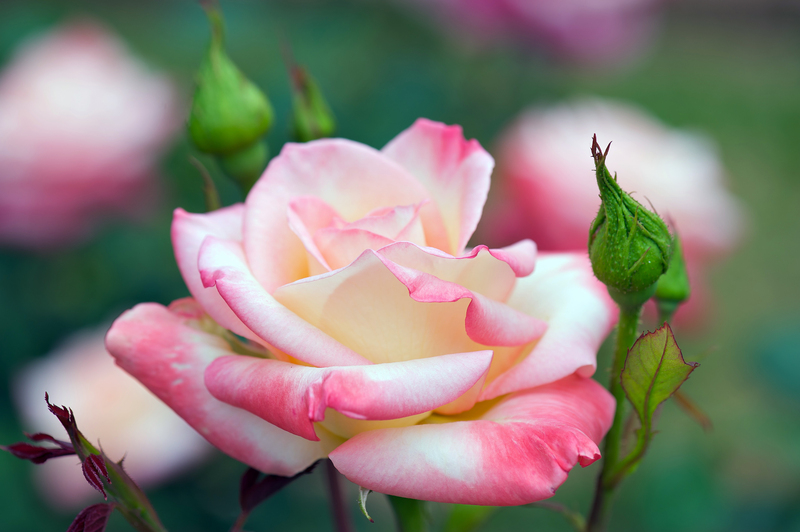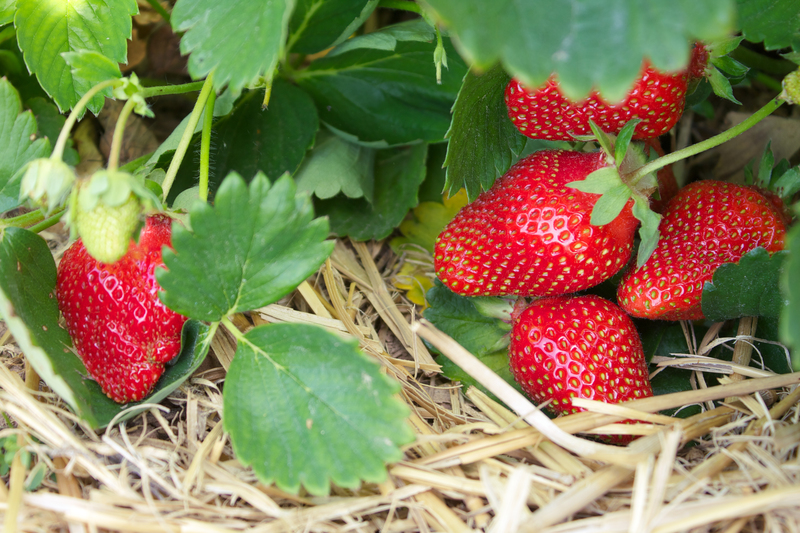Secrets to maintaining thriving orchid blooms
Posted on 30/09/2025
Unlocking the Secrets to Maintaining Thriving Orchid Blooms
Orchids have captivated plant lovers for centuries with their exotic beauty and intricate flowers. Yet, achieving and maintaining thriving orchid blooms is often shrouded in mystery for many growers. This comprehensive guide will reveal the essential secrets behind cultivating healthy, blooming orchids that dazzle year after year.

Understanding Orchid Care Essentials
To ensure stunning, long-lasting orchid blossoms, it's critical to understand the unique needs of orchids. Unlike many houseplants, orchids usually grow as epiphytes--air plants that cling to trees in their native tropical settings. Therefore, successfully nurturing these captivating flowers involves mimicking their natural environment as closely as possible.
Choosing the Right Orchid Species
- Phalaenopsis (Moth Orchid): Popular for beginners, known for resilience and large, elegant flowers.
- Cattleya: Renowned for fragrant, showy blooms.
- Dendrobium: Features a variety of forms and prolific flowering habits.
- Oncidium (Dancing Lady): Recognized for their airy sprays of blooms.
Each orchid species comes with unique care requirements. Learning about your orchid's specific needs is the first step towards sustained and abundant flowering.
Optimal Light for Vibrant Orchid Blooms
The Importance of Proper Lighting
Light is paramount for orchid blooms to thrive. Orchids require plenty of bright, indirect light--direct sun can scorch leaves, while low light results in weak growth and scant blossoms.
Telltale Signs of Improper Lighting
- Too Much Light: Yellowing leaves, dry and scorched edges.
- Insufficient Light: Dark green, floppy leaves; failure to bloom.
Place orchids near east or south-facing windows with filtered light. If natural light is lacking, quality grow lights are an excellent alternative to encourage robust, recurrent blooms.
Watering Techniques: The Heartbeat of Orchid Care
Striking the Balance for Healthy Blooms
Overwatering is the number one culprit behind dying orchids. Their natural epiphytic roots crave air, not soggy soil. That's why understanding proper watering techniques is a fundamental secret to achieving prolific orchid blooms.
- Inspect Moisture: Use your finger to check the moisture level in the growing medium before watering.
- Soak, Don't Let Sit: Water thoroughly, allowing excess to drain out. Never let the pot sit in water.
- Frequency Matters: Watering once every 7-10 days is common but may vary based on humidity and potting mix.
- Morning Routine: Always water in the morning to prevent nighttime fungal growth.
Remember, less is often more when it comes to watering orchids. Aim for slightly dry conditions between waterings to mimic their natural rainforest rhythm.
The Right Potting Mix and Repotting Practices
Choosing the Ideal Orchid Substrate
Maintaining thriving orchid blooms requires a specialized potting mix. Regular potting soil can suffocate delicate roots--choose instead:
- Bark-based mixes (fir bark or cypress)
- Sphagnum moss
- Coconut husk chips
- Perlite for added drainage
These substrates promote airflow to the roots, mirroring how orchids attach to tree bark in nature.
When and How to Repot Orchids
- Repot every 1-2 years, or when the potting mix breaks down.
- Gently remove old substrate and trim dead roots before placing your orchid in fresh medium.
- Ensure your new pot has excellent drainage holes to prevent root rot.
After repotting, hold off on fertilizing for a couple of weeks to allow the plant to adjust and recover.
Fertilizing for Exceptional Orchid Blooms
The Secret Formula for Peak Performance
Supplying the right nutrients at the right time is crucial for abundant, healthy orchid flowers. Use a balanced, water-soluble orchid fertilizer (such as 20-20-20 or 30-10-10) diluted to half or quarter strength. Apply:
- Every two weeks during active growth and flower spike development.
- Monthly during dormancy periods or slower growth.
- Rinse the roots with plain water occasionally to prevent salt buildup.
Avoid over-fertilizing, as it can damage roots and prevent your orchid from blooming altogether.
Humidity and Air Circulation: Creating the Perfect Microclimate
Humidity: The Secret Sauce for Lush Orchid Blooms
Most orchids flourish in humidity levels of 40% to 70%. If your home is dry, especially in winter, use these tips:
- Place orchid pots on humidity trays filled with pebbles and water, ensuring pots never sit directly in water.
- Group orchids together to increase humidity by natural transpiration.
- Use a room humidifier for controlled increases in moisture.
Airflow: Preventing Pests and Disease
Good air circulation is essential for preventing mold, rot, and insect infestations. Use a small desk fan on a low setting to keep air moving gently around your orchids, but avoid blasting plants with direct wind. This simple tip helps create the fresh, breezy environment orchids love.
Temperature and Seasonal Changes
Most orchids grown at home prefer temperatures between 60?F (16?C) at night and 80?F (27?C) during the day. Some species, such as Phalaenopsis, need a brief period of cooler night temperatures (about 10?F lower than daytime temps) to trigger flowering.
Protect your orchids from drafts, heaters, and sudden cold snaps, which can stress the plants and inhibit blooming.
Pruning and Deadheading: Encouraging Re-Blooming Orchids
The Secret to Continued Orchid Flowers
Once a flower spike fades and blossoms drop, careful pruning can encourage new blooms:
- For Phalaenopsis, cut the flower spike just above a node (bump) to possibly trigger a new flower branch.
- Remove any dead or yellow leaves with sterilized scissors to prevent disease.
- Clean fallen petals and debris from the surface to avoid attracting pests.
Regular deadheading and cleaning direct the plant's energy into new growth and flowering rather than seed production.
Pest and Disease Management for Blooming Orchids
Even with optimal care, orchids can occasionally suffer from mealybugs, scale, spider mites, and fungal infections. Here's how to keep your blooms safe:
- Inspect regularly for sticky leaves, webbing, or tiny insects.
- Wipe affected leaves with rubbing alcohol to remove pests.
- Isolate new or sick orchids to prevent spread of problems.
- Avoid overcrowding and maintain good air circulation to reduce fungal risk.
Early action is the secret to protecting your precious orchid flowers from damage.
Patience: The Ultimate Secret to Thriving Orchid Blooms
Perhaps the most important secret in orchid care is patience. Orchids follow their own time schedule, and flower spikes may take months to develop and open. Avoid over-fussing, and give your plant time to respond to improved conditions. In most cases, healthy, well-cared-for orchids will reward you with impressive, lasting blooms.
Advanced Blooming Techniques
Cool Night Induction
- Expose your orchid to slightly cooler nights for a few weeks in autumn to kickstart blooming cycles.
Timed Fertilizing and Watering Adjustments
- In the pre-bloom phase, reduce watering slightly while increasing light intensity if possible.
- After the spike forms, resume regular watering and fertilizing.
Common Orchid Blooming Mistakes and How to Fix Them
- Pot-bound roots: Repot every couple of years to prevent overcrowding and support root health.
- Ignoring species requirements: Research and match care to your orchid's specific variety.
- Excessive leaf growth, no flowers: Adjust fertilizer to a higher phosphorus ratio during bloom cycles.
- Inconsistent watering schedules: Create and stick to a routine based on your orchid's feedback.

Frequently Asked Questions: Orchid Flower Care Secrets
Why did my orchid stop blooming?
Orchids often stop blooming due to inadequate light, improper watering, lack of fertilization, or insufficient temperature drops at night. Evaluate care routines and adjust one variable at a time.
How can I get my orchid to rebloom?
Ensure your orchid has recovered from previous blooming, receives bright indirect light, and experiences a temperature drop at night. Prune faded spikes above a node and resume a consistent care schedule.
What's the best fertilizer for orchid blooms?
Use a balanced, water-soluble orchid fertilizer diluted to half or quarter strength. Choose higher phosphorus content for blooming periods and rinse the media regularly to prevent salt buildup.
Can I put my orchid outside in summer?
Many orchids thrive outdoors in summer if protected from harsh sunlight and extreme weather. Acclimate your plant slowly to outdoor conditions and check regularly for pests.
Conclusion: The Art and Science of Gorgeous Orchid Blooms
Maintaining thriving orchid blooms is a blend of science, patience, and a touch of artistry. By focusing on the right light, precise watering, specialized substrates, careful fertilization, optimal humidity, and gentle encouragement, you can unlock the secrets to dazzling and sustainable orchid flowers in your own home.
With these expert tips, you'll transform even the most reluctant orchid into a perennial showstopper. Happy growing, and may your orchids reward you with a symphony of blooms for years to come!

